Moving into Spring, we gathered again at the plot to explore and map sounds together. This time we were fortunate with dry milder weather, allowing us to use more arts materials and spend more relaxed time exploring. Eleven people joined Bethan (Brighton & Hove Music for Connection), Al (Lost Property/Sound Art Brighton) and Graham (Lost Property) at the plot. The workshop followed on from a session last autumn, part of our intention to collectively map sounds as they change through the seasons and the plot becomes a site for ecomusicology.
We started with a deep listening exercise, spending silent time walking and sitting, before we experimented with how to capture our experiences. We used a range of materials: an old drawn map of the site, tracing paper, felt tips, crayons, charcoal, clipboards, paper, pens, and pencils. This again included a “sound stimuli” sticker set based on Bethan’s research into participatory listening research. These stickers represent the different ways that sounds can act on us: sound surprises, sound sparks, sound stories, and sound layers. We spent time at the end sharing our maps, discussing what we’d encountered and adding to the big collective map.
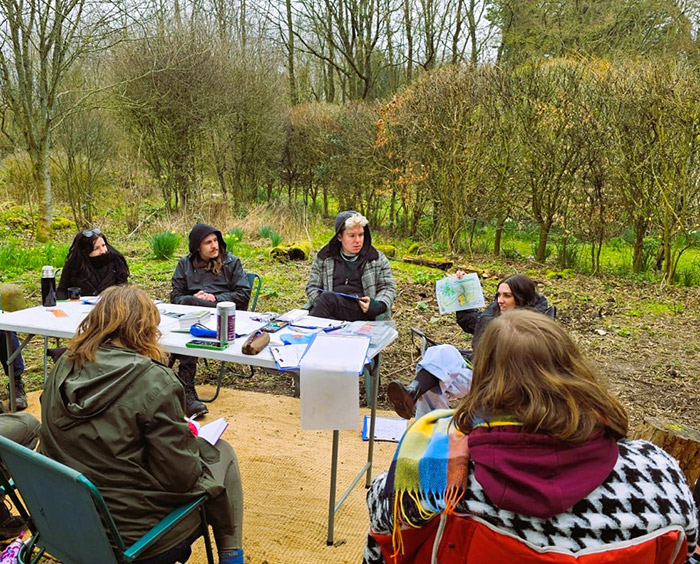
We used the theme of sound layers, which had come up in the last workshop. Thinking about: sounds coming from inside and outside the plot, sounds above and below, and how sounds contrast and interact together. We set up the hydrophones (underwater microphones) to listen to the pond as a way of listening inside the plot.
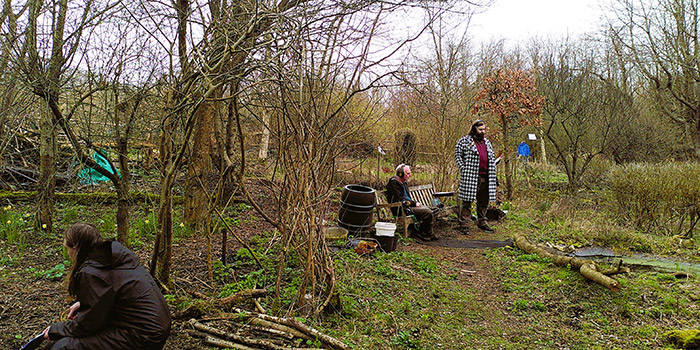
There was a great variety in the way everyone went about their soundmaps. Some were very colourful – like the below example. This map’s creator used colours to indicate temperature, which sparked discussion about how different types of weather can make us more or less open to listening. She was surprised by how much life there was in the pond, which was represented by the light bulb sticker and yellow/red/black markings. The footsteps of a dog walker made her think of nice memories walking her own dogs, marked by the scroll symbol sticker and red footprints.
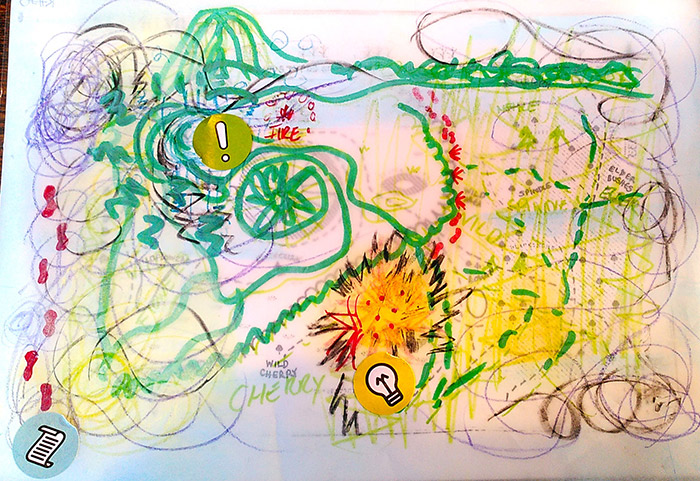
Some maps were visually more minimal. One person marked in charcoal every time they heard the sounds made by wind – a windmap. Another person numbered their paper (without the hand-drawn map) and wrote notes because they felt translating the sounds into visual representations was another complicated step along the process. Their map was rich with descriptions of sounds based around taste; a dog barking was described as “liquorice – spicy” and seagull calls as “vinegary”.
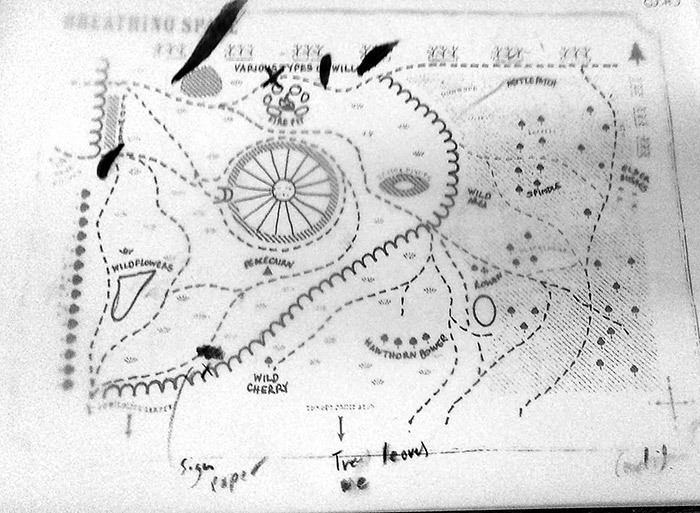
There were similarities with where people marked sounds, chiming with the last workshop as well e.g. the willow dome and the southern border were significant places. This time there was more of a focus on the sounds coming from the neighbouring plot because they were also holding an event. The pond became more of a focal point through the hydrophones. Everyone was surprised at how much could be heard in the pond, given the time of year and seemingly little pond life. As we continue with these workshops, we might want to call these common listening spots “soundmarks”. In soundscape studies, this term refers to a community sound which is unique or possesses qualities which make it specially regarded or noticed by the people in that community.
The theme of sound layers brought up interesting discussion about orientation and how we orient ourselves in relation to the sounds around us. One participant used 3 layers of tracing paper to mark the sounds close to them, the sounds coming from different directions around them (marked by arrows), and the sounds above (e.g. made by passing aeroplanes and the wind).
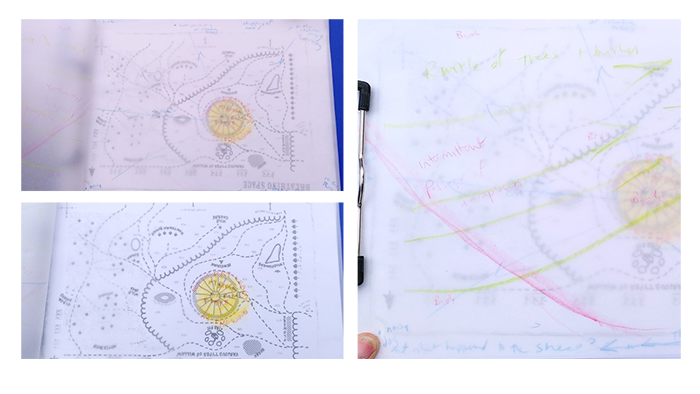
The drawn site map, which we have been layering sounds onto in the workshops so far, takes a conventional birds-eye view. This is the common way we think of maps, but it’s not the only way. Sounds can challenge us to think about other ways we can map. So all in all, lots of food for thought about how we could do the next workshops, as well as ideas about how we could use these maps as scores for future jams on the plot…
If you would like to find out more and be added to an email list about listening and soundmapping workshops, please email Bethan: bethan@musicforconnection.co.uk.
